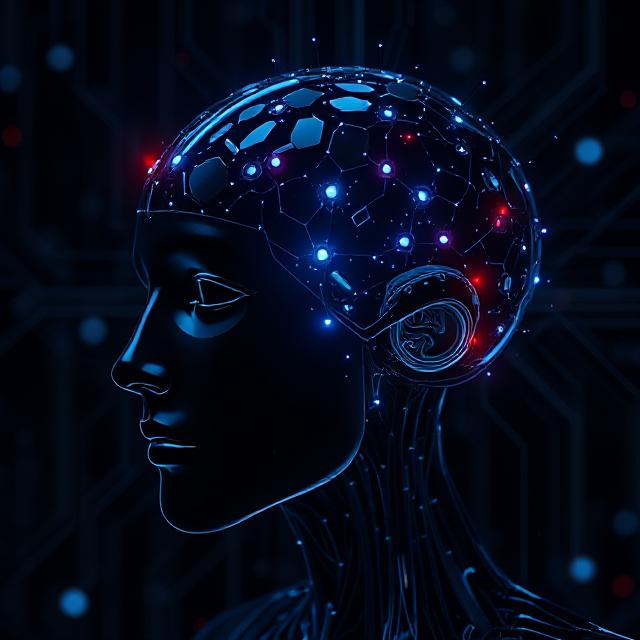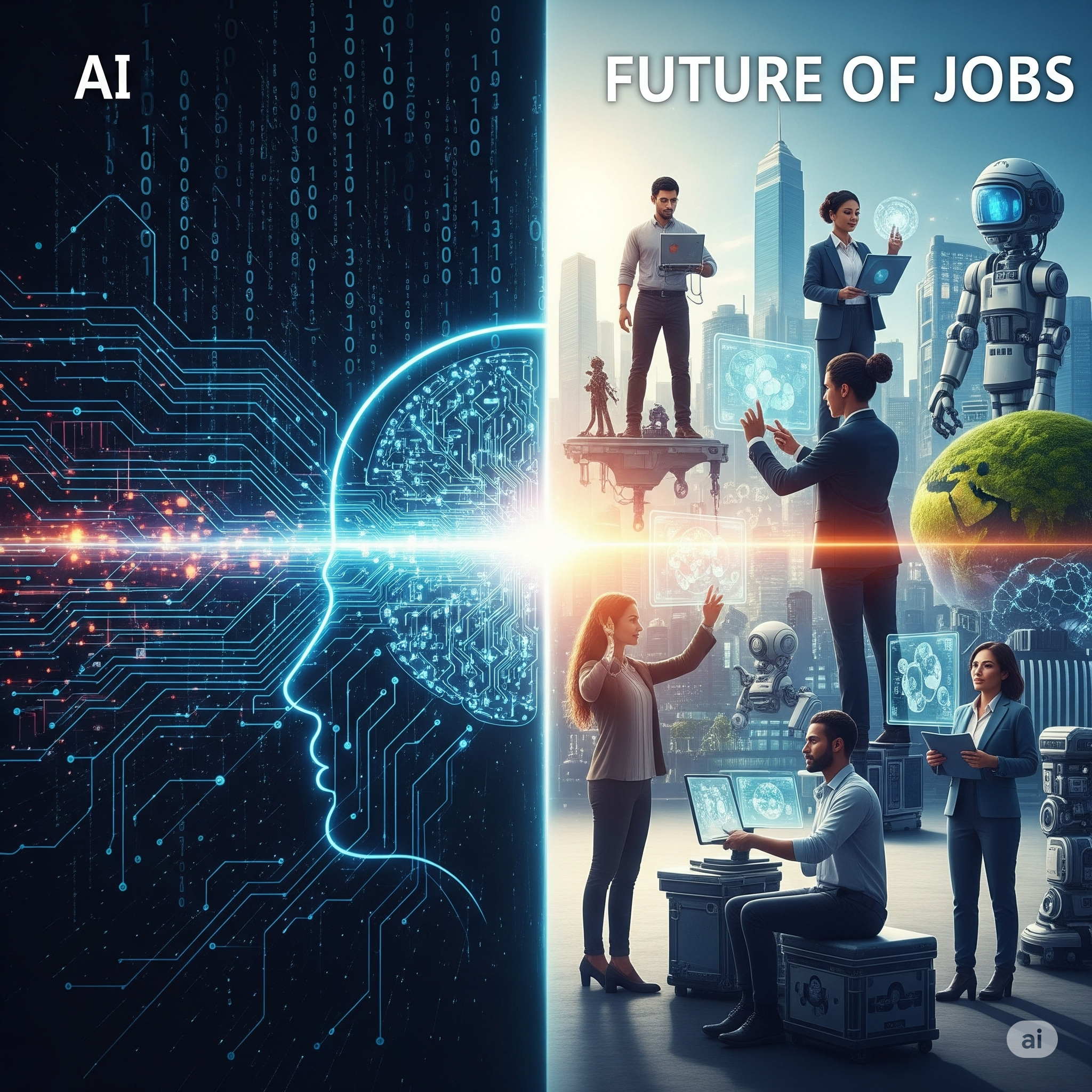Introduction
Artificial Intelligence (AI) is no longer a futuristic concept; it has permeated every aspect of modern life. However, the AI we commonly interact with—like virtual assistants, recommendation algorithms, or chatbots—is a form of Narrow AI. It excels at specific tasks but lacks true understanding. In contrast, General Artificial Intelligence (AGI) represents the next frontier—an AI system with cognitive capabilities akin to human intelligence. AGI can reason, learn, and solve problems across a wide range of domains without being explicitly programmed for each.
This educational content explores the concept of AGI, its evolution, technical challenges, differences from Narrow AI, and its future impact on society, economy, and ethics.
Understanding AGI: Definition and Characteristics
Definition of AGI
General Artificial Intelligence (AGI) refers to the capability of an intelligent agent to understand, learn, and apply knowledge in a generalized way, similar to human cognition. Unlike Narrow AI, which is designed for one specific task, AGI can perform any intellectual task that a human being can. It can reason, understand natural language, perceive the environment, and adapt to new situations without requiring specific retraining.
Core Characteristics of AGI
- Autonomy: AGI systems are capable of independent learning and decision-making.
- Adaptability: They can apply knowledge gained in one context to completely different tasks.
- Conscious Learning: AGI mimics human-like learning from unstructured data and experience.
- Cognitive Flexibility: These systems can perform a variety of intellectual tasks without being hardcoded for each.
- Theory of Mind: AGI is expected to understand human emotions, beliefs, and intentions to interact effectively.
The Evolution of AGI: From Philosophy to Practical Ambitions
Historical Roots
The idea of AGI can be traced back to the early philosophers and logicians who pondered over what makes human reasoning unique. Thinkers like Descartes and Leibniz speculated about mechanical reasoning centuries before modern computers existed.
Alan Turing’s Vision
Alan Turing, often regarded as the father of computer science, introduced the idea of a “universal machine” and later the Turing Test as a benchmark for machine intelligence. His work laid the philosophical and mathematical foundation for AGI.
AI Winter and Rebirth
The development of AI faced several setbacks known as “AI winters” due to overhyped expectations and lack of computational power. However, recent advancements in machine learning, neural networks, and computational hardware have reignited interest in AGI, making it a more plausible objective than ever before.
AGI vs. Narrow AI: Key Differences
| Feature | Narrow AI | General AI (AGI) |
|---|---|---|
| Scope | Task-specific | General-purpose |
| Learning | Requires retraining for new tasks | Learns across tasks and domains |
| Flexibility | Rigid; predefined algorithms | Adaptable; self-learning |
| Example | Chess-playing AI, spam filters | Human-like robot, universal assistant |
| Cognitive Ability | No understanding or self-awareness | Potential for understanding and awareness |
Core Technologies Behind AGI Development
Developing AGI requires a convergence of multiple technologies and disciplines:
1. Neural Networks and Deep Learning
While deep learning underpins most current AI, AGI will require meta-learning—systems that can learn how to learn. This includes continuous learning without forgetting previous knowledge (known as catastrophic forgetting).
2. Reinforcement Learning
AGI will rely heavily on reinforcement learning, where agents learn by interacting with the environment, receiving rewards or penalties. Advanced versions include multi-agent reinforcement learning, mimicking human social learning.
3. Cognitive Architectures
Frameworks like SOAR, ACT-R, and OpenCog attempt to replicate human-like thought processes. These architectures integrate memory, attention, learning, and reasoning into a unified system.
4. Natural Language Understanding (NLU)
AGI systems must possess a deep understanding of language, context, semantics, and even emotions. Projects like GPT and BERT represent significant steps, though they still fall short of true comprehension.
5. Symbolic Reasoning and Logic
A blend of symbolic AI (logic-based) and connectionist AI (neural networks) is often considered essential for AGI. This hybrid approach aims to replicate human reasoning more effectively.
Challenges in Achieving AGI
Despite rapid progress, AGI remains a formidable challenge due to several inherent complexities:
1. Understanding Human Consciousness
Replicating human consciousness, emotions, intuition, and self-awareness in machines is not only a technological but also a philosophical challenge.
2. Massive Computational Requirements
AGI requires immense computing power, memory, and energy efficiency. Simulating the human brain’s 86 billion neurons and trillions of synapses is computationally daunting.
3. Lack of Generalization in Current Models
Most AI models today are narrow—they fail to generalize beyond the training data. AGI would need transfer learning capabilities across tasks and domains.
4. Data Scarcity and Bias
AGI systems require vast, high-quality, unbiased data. Human-like cognition also involves learning from small datasets, an area where current models are weak.
5. Safety and Alignment
Ensuring that AGI systems behave in ways aligned with human values—known as AI alignment problem—is a critical concern.
Global Research Efforts and Initiatives
1. OpenAI
Founded with the goal of developing safe AGI that benefits humanity, OpenAI has made strides with models like GPT-4 and ongoing research into general intelligence.
2. DeepMind
A subsidiary of Alphabet Inc., DeepMind focuses on building AGI through reinforcement learning and neuroscience-inspired models. Its AlphaGo and AlphaFold are milestones.
3. MIT and Stanford AI Labs
These institutions conduct foundational research into cognitive architectures, robotics, and AGI ethics.
4. Chinese and European AGI Programs
Countries like China have national AI strategies aimed at becoming leaders in AGI by 2030, while the EU emphasizes ethical and explainable AI systems.
Potential Applications of AGI
1. Universal Personal Assistants
AGI could manage tasks across education, healthcare, finance, and law with human-like understanding and empathy.
2. Scientific Discovery
AGI could accelerate discoveries in fields like medicine, climate science, and quantum physics by analyzing massive datasets and forming novel hypotheses.
3. Education and Skill Development
Customized learning pathways, real-time feedback, and intelligent tutoring systems would transform the educational experience.
4. Healthcare Diagnostics
With superior reasoning and memory, AGI can provide highly accurate diagnostics, personalized treatment plans, and robotic surgery.
5. Climate Modeling and Policy Formulation
AGI could analyze climate data, simulate policy outcomes, and recommend strategies for sustainable development.
Ethical and Societal Implications of AGI
1. Employment Displacement
AGI could replace human labor across cognitive domains, raising concerns about mass unemployment and the need for reskilling.
2. Existential Risks
Uncontrolled AGI development may pose existential risks if systems act autonomously with goals misaligned with human welfare.
3. Privacy and Surveillance
AGI with advanced surveillance and data analysis capabilities could be used for mass surveillance, posing threats to civil liberties.
4. Bias and Fairness
If AGI systems are trained on biased data, they could perpetuate or even amplify societal inequalities.
5. Regulation and Control
Governments and global organizations will need robust legal and ethical frameworks to manage the development and deployment of AGI.

AGI and the Future of Humanity
The emergence of AGI could mark a technological singularity—a point at which machine intelligence surpasses human intelligence, potentially reshaping civilization. While some envision a utopia of abundance and leisure, others warn of dystopian outcomes.
Strategic Recommendations:
- International Collaboration: Like nuclear treaties, AGI should be developed under globally agreed norms and safeguards.
- Ethical Design: Embedding ethics, empathy, and social values into AGI algorithms.
- Transparency: Ensuring systems are interpretable and accountable.
- Education and Awareness: Preparing society to understand and adapt to AGI’s implications.
Conclusion
General Artificial Intelligence (AGI) is more than just a technological ambition—it is a philosophical, ethical, and existential endeavor. While Narrow AI continues to revolutionize specific domains, AGI promises to redefine human-machine interaction at its core. The journey towards AGI is riddled with challenges, but also immense opportunities. Ensuring its safe, inclusive, and beneficial development requires global collaboration, visionary policymaking, and a renewed focus on what it means to be intelligent.
The road to AGI is a journey not just of machines, but of humanity itself—toward understanding the very nature of intelligence, consciousness, and our place in a rapidly evolving digital universe.





It’s becoming clear that with all the brain and consciousness theories out there, the proof will be in the pudding. By this I mean, can any particular theory be used to create a human adult level conscious machine. My bet is on the late Gerald Edelman’s Extended Theory of Neuronal Group Selection. The lead group in robotics based on this theory is the Neurorobotics Lab at UC at Irvine. Dr. Edelman distinguished between primary consciousness, which came first in evolution, and that humans share with other conscious animals, and higher order consciousness, which came to only humans with the acquisition of language. A machine with only primary consciousness will probably have to come first.
What I find special about the TNGS is the Darwin series of automata created at the Neurosciences Institute by Dr. Edelman and his colleagues in the 1990’s and 2000’s. These machines perform in the real world, not in a restricted simulated world, and display convincing physical behavior indicative of higher psychological functions necessary for consciousness, such as perceptual categorization, memory, and learning. They are based on realistic models of the parts of the biological brain that the theory claims subserve these functions. The extended TNGS allows for the emergence of consciousness based only on further evolutionary development of the brain areas responsible for these functions, in a parsimonious way. No other research I’ve encountered is anywhere near as convincing.
I post because on almost every video and article about the brain and consciousness that I encounter, the attitude seems to be that we still know next to nothing about how the brain and consciousness work; that there’s lots of data but no unifying theory. I believe the extended TNGS is that theory. My motivation is to keep that theory in front of the public. And obviously, I consider it the route to a truly conscious machine, primary and higher-order.
My advice to people who want to create a conscious machine is to seriously ground themselves in the extended TNGS and the Darwin automata first, and proceed from there, by applying to Jeff Krichmar’s lab at UC Irvine, possibly. Dr. Edelman’s roadmap to a conscious machine is at and here is a video of Jeff Krichmar talking about some of the Darwin automata